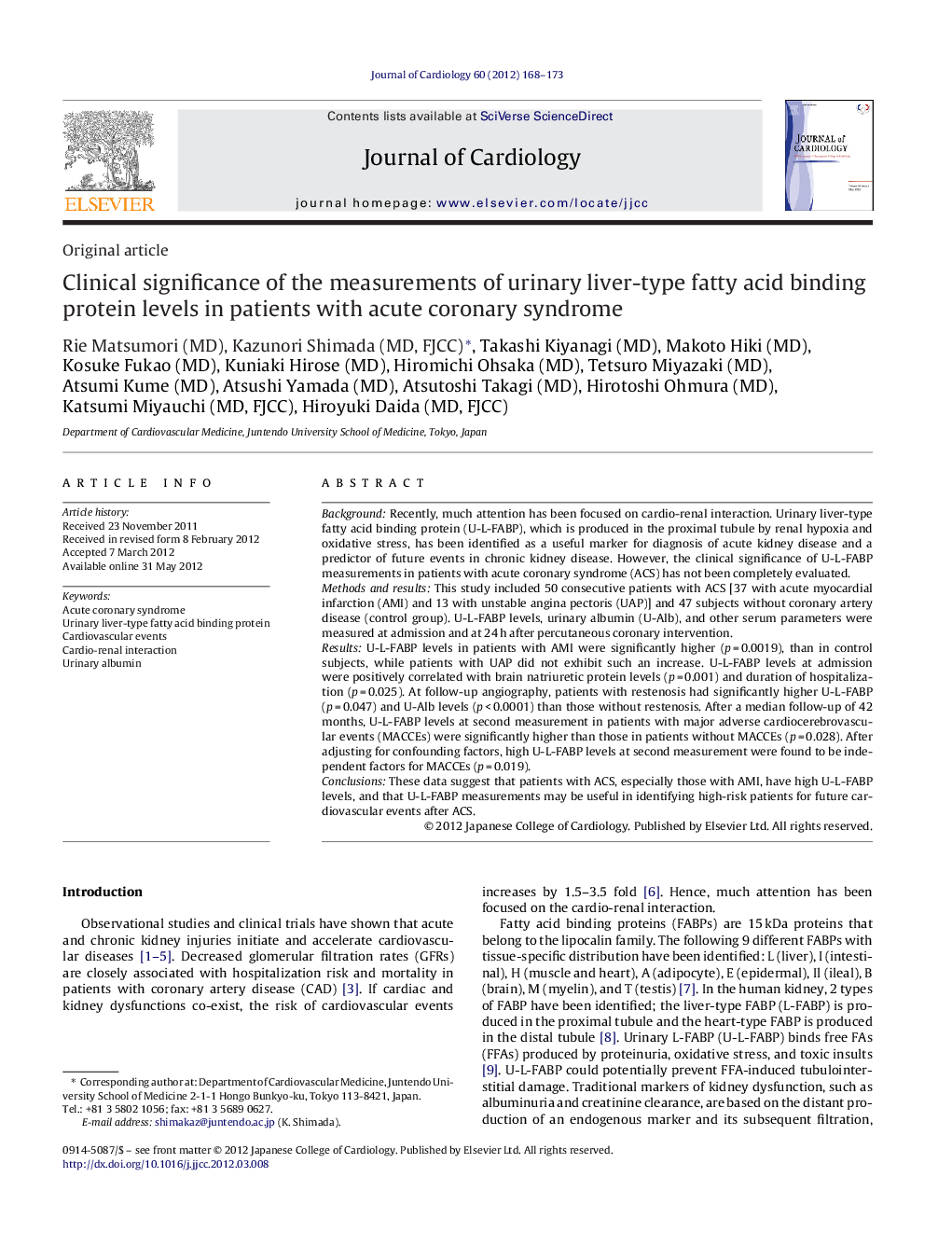| Article ID | Journal | Published Year | Pages | File Type |
|---|---|---|---|---|
| 2963126 | Journal of Cardiology | 2012 | 6 Pages |
BackgroundRecently, much attention has been focused on cardio-renal interaction. Urinary liver-type fatty acid binding protein (U-L-FABP), which is produced in the proximal tubule by renal hypoxia and oxidative stress, has been identified as a useful marker for diagnosis of acute kidney disease and a predictor of future events in chronic kidney disease. However, the clinical significance of U-L-FABP measurements in patients with acute coronary syndrome (ACS) has not been completely evaluated.Methods and resultsThis study included 50 consecutive patients with ACS [37 with acute myocardial infarction (AMI) and 13 with unstable angina pectoris (UAP)] and 47 subjects without coronary artery disease (control group). U-L-FABP levels, urinary albumin (U-Alb), and other serum parameters were measured at admission and at 24 h after percutaneous coronary intervention.ResultsU-L-FABP levels in patients with AMI were significantly higher (p = 0.0019), than in control subjects, while patients with UAP did not exhibit such an increase. U-L-FABP levels at admission were positively correlated with brain natriuretic protein levels (p = 0.001) and duration of hospitalization (p = 0.025). At follow-up angiography, patients with restenosis had significantly higher U-L-FABP (p = 0.047) and U-Alb levels (p < 0.0001) than those without restenosis. After a median follow-up of 42 months, U-L-FABP levels at second measurement in patients with major adverse cardiocerebrovascular events (MACCEs) were significantly higher than those in patients without MACCEs (p = 0.028). After adjusting for confounding factors, high U-L-FABP levels at second measurement were found to be independent factors for MACCEs (p = 0.019).ConclusionsThese data suggest that patients with ACS, especially those with AMI, have high U-L-FABP levels, and that U-L-FABP measurements may be useful in identifying high-risk patients for future cardiovascular events after ACS.
